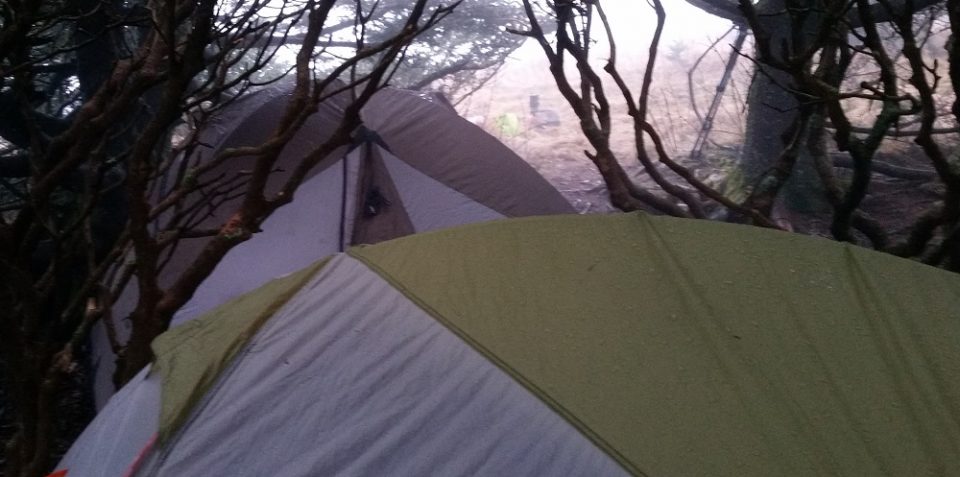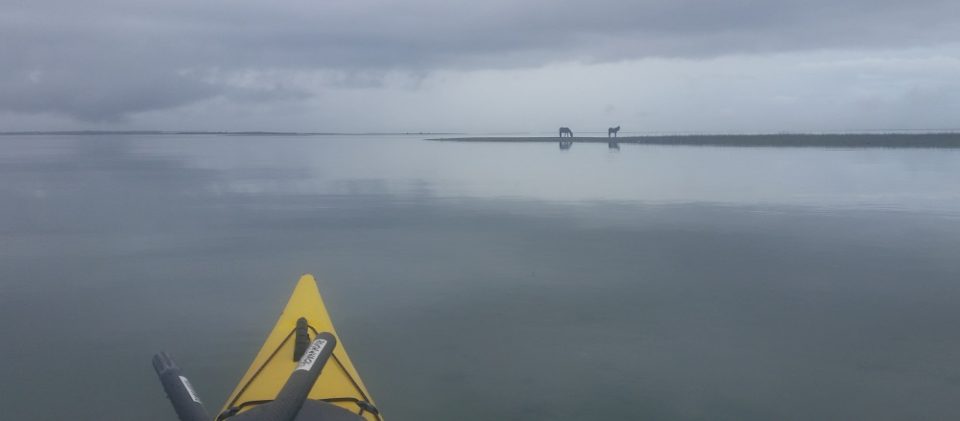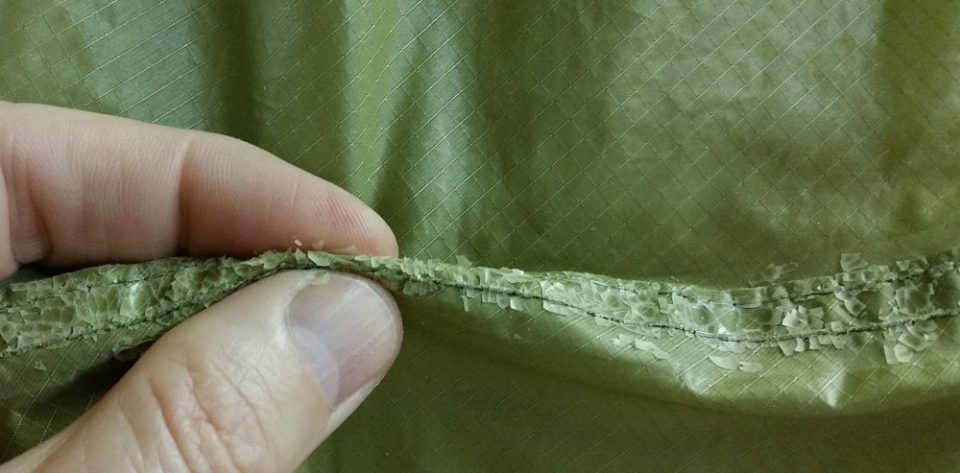Most sensible people need shelter on an overnight adventure. Adventure racers who simply race through the night might be an exception. If you’re backpacking, doing a bike overnight, motorcycle touring, or kayak camping, you’re probably taking along some form of functional shelter, even if it is a reservation for a hotel room.
A Dysfunctional Shelter
While backpacking at Roan Mountain last December, I realized my REI Quarter Dome T2 Plus tent was having some issues. A fly tie-back strap fell off. The seam tape holding the tie-back in place was disintegrating. Not just at this tie-back, but along the full length of all the fly seams. The tape was flaking off like dandruff. Lucky for me we had more mist than rain that weekend. I returned home with plans to re-seal the seams soon.

Applying The Solution
Flash forward to May. The bottle of seam sealer I picked up in December had yet to be applied to the tent. My bottle of procrastination was almost empty. With two days to go before a kayak camping trip, I pitched the tent in the yard and spread the sealer on the outside of all the fly seams. By late afternoon it was dry. Perfect.
Testing
On the second night of the kayak trip, we pitched our tents by the dunes at the end of the island. Cape Lookout lighthouse blinked at us across Lookout Bight. We hoped to enjoy a nice sunset over the water. Clouds rolling in from the southwest had a different plan. Just before 9:30 pm the clouds drove us into our tents with a sudden downpour.
Sleeping in a tent being pelted by raindrops is good. It is nature’s white noise. Sleeping while being pelted by raindrops is not so good. I spent the first hour or so shifting around in the tent trying to avoid the rain drips coming through the fly. With just one person in a two-person tent, you have that option. The cold shock of a drop of water striking you in the ribs will keep you awake enough to ponder why the freshly sealed seams were letting water through.
A New Shelter
An hour later, with no change in the rain except for more of it coming down, I was out of dry spots to contort to. This was not the first time Adventure has forced me to be resourceful in the middle of the night. I stuffed everything that needed to stay dry: the sleeping bag and my phone, into a dry bag. Most of my other gear was already packed safely away in the kayak.
Then I put on my raincoat and rain pants and just lay on the air mattress. I pulled the jacket’s hood down over my eyes. There was nothing else to do.
It is a lot easier to pretend you’re sleeping when the drops of water falling on you don’t arrive with a sudden cold chill. The simple plop of a drop of water on a rain suit is almost like a tiny massage touch. I finally drifted off to sleep under the water massage while the storm raged on outside.
Fine Tuning
Apparently, the wee hours of the morning, around 3 or 4 am, is when there’s a shift change at my internal heating plant. Somebody slacks off in the changeover and my core temperature drops. If I’m not in a warm enough sleeping bag or under enough covers, the temperature alarm goes off and wakes me up. Sleeping in a rain suit apparently doesn’t hold in quite enough heat.
Everything inside my rain suit was fine. But my bare feet sticking out were rather chilly. In their defense, they are a long way from the warmth of my heart. My annoyed, half-asleep brain decided to just stuff my feet in the tent bag. It was already wet anyway and should hold a little heat in. It was a brilliant solution, actually. I dozed right back off again, pretending to sleep as if nothing had happened.
Except for a brief break around breakfast time, the rain continued relentlessly. I continued my water massage meditation just as relentlessly. When the rain stopped again around midday, we quickly stuffed our wet gear in the kayaks and paddled for home. I briefly considered just leaving the tent there, but that would have been littering.
To Pitch or Not to Pitch
My guess is this tent is at least eight to ten years old. The shock cord in the poles is still good. The urethane coating on the fly and floor is good. Only the seam tape on the fly and the corners of the tent floor is deteriorating. I decided I wasn’t ready to pitch this tent in the trash when a tube of (good) seam sealer should stop the leaks and allow several more years of successful tent pitching.
Was the first seam sealer product bad? I can’t say for sure. It was a water-based sealer from Gear Aid. I shook it up before applying, but maybe not enough. Maybe I let it age too long before I applied it. Maybe it was old when I bought it. You can’t see any sign of it on the fly now, so I’m not surprised it failed to seal the seams.
This time I bought a big tube of Seam Grip, which is not water-based. It is also made by Gear Aid, but an REI salesperson I spoke with said Gear Aid sealers had a good reputation.
The rest of the flaking seam tape needs to be removed before I apply the new sealer. Otherwise Rolling the seams between two fingers causes the tape to flake off easily, but there’s a lot of seam on this two-person tent with two vestibules.
I’ll report back when I’m done. After the re-sealed tent has been tested under a sprinkler in the yard!
Have you had success re-sealing seams on an older tent? If so, I’d love to hear about it. Please leave a comment below.







